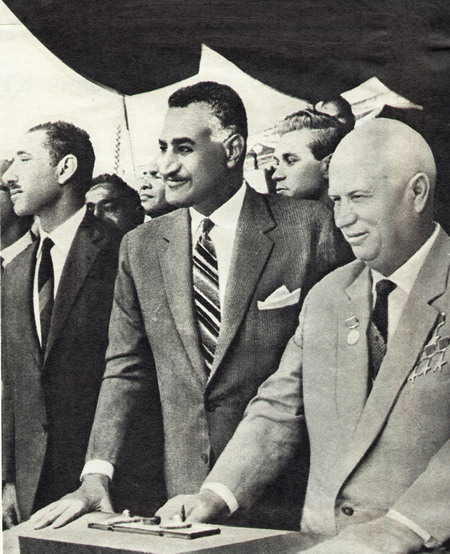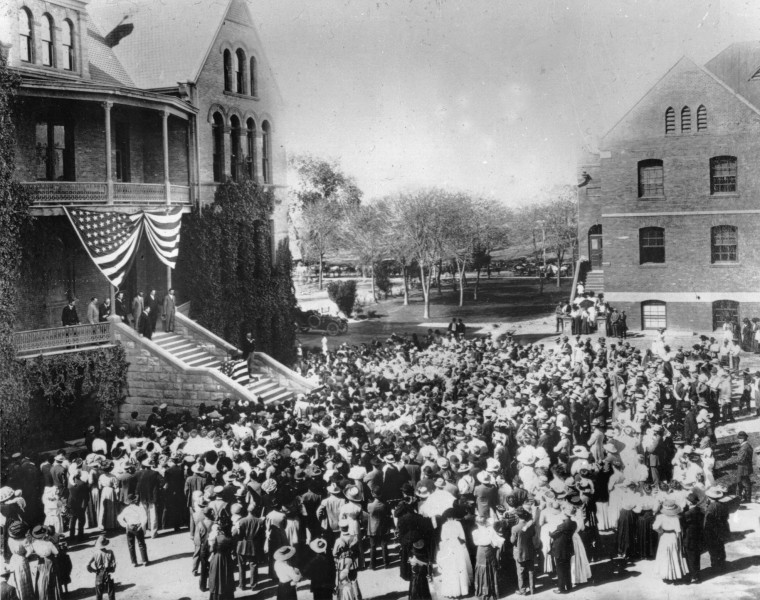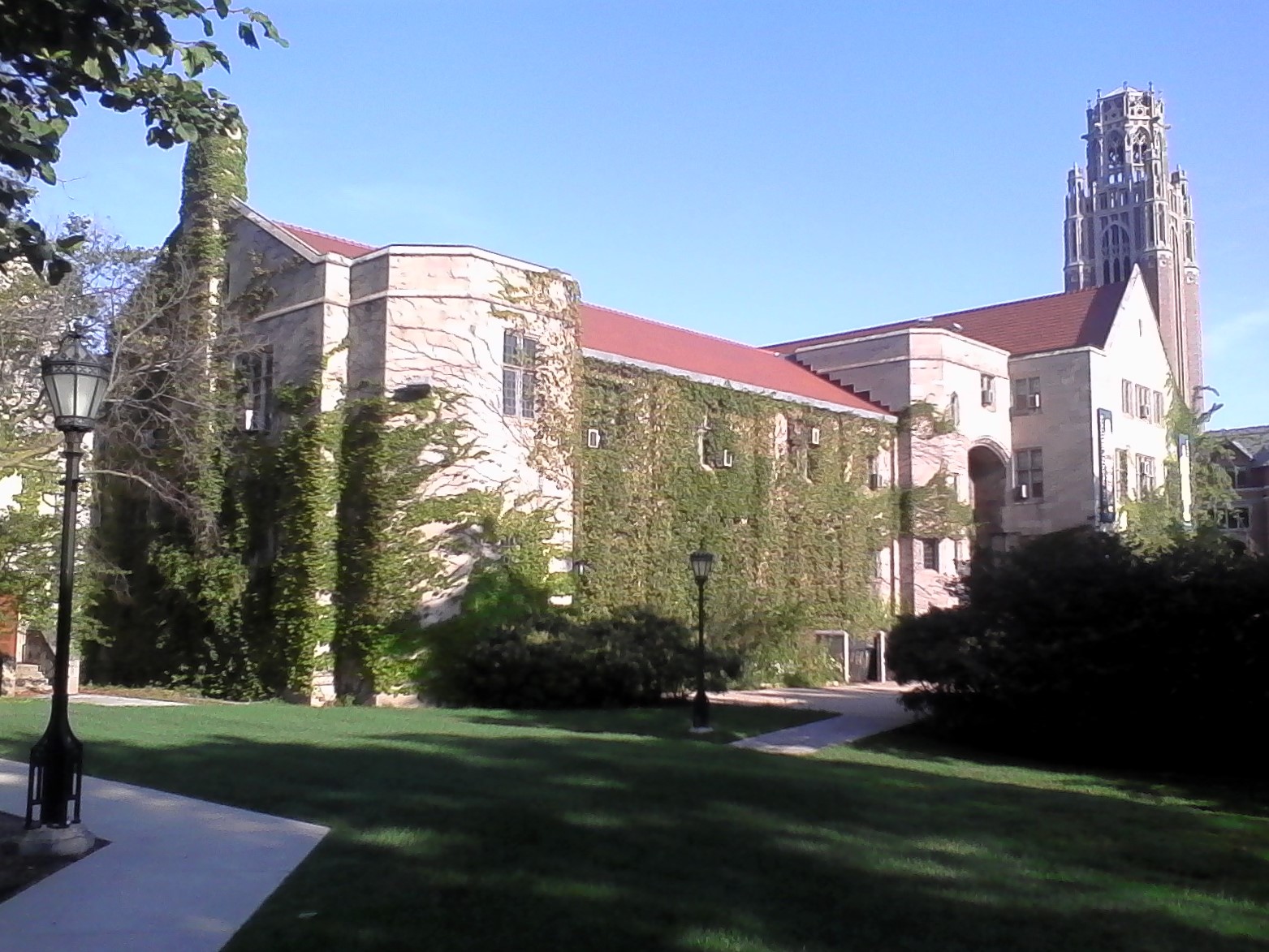|
Semna
The region of Semna is 15 miles south of Wadi Halfa and is situated where rocks cross the Nile narrowing its flow—the Semna Cataract. Semna was a fortified area established in the reign of Senusret I (1965–1920 BC) on the west bank of the Nile at the southern end of a series of Middle Kingdom fortresses founded during the Twelfth Dynasty of Egypt (1985–1795 BC) in the Second-Cataract area of Lower Nubia. There are three forts at Semna: Semna West (Semna Gharb), Semna East (Semna Sherq, also called Kummeh or Kumma), and Semna South (Semna Gubli). The forts to the east and west of the Semna Cataract are Semna East and West, respectively; Semna South is approximately one kilometer south of Semna West on the west bank of the Nile. The Semna gorge, at the southern edge of ancient Egypt, was the narrowest part of the Nile valley. It was here, at this strategic location, that the 12th Dynasty pharaohs built a cluster of four mud-brick fortresses: Semna, Kumma, Semna South an ... [...More Info...] [...Related Items...] OR: [Wikipedia] [Google] [Baidu] |
Semna Kumma View From West
The region of Semna is 15 miles south of Wadi Halfa and is situated where rocks cross the Nile narrowing its flow—the Semna Cataract. Semna was a fortified area established in the reign of Senusret I (1965–1920 BC) on the west bank of the Nile at the southern end of a series of Middle Kingdom fortresses founded during the Twelfth Dynasty of Egypt (1985–1795 BC) in the Second-Cataract area of Lower Nubia. There are three forts at Semna: Semna West (Semna Gharb), Semna East (Semna Sherq, also called Kummeh or Kumma), and Semna South (Semna Gubli). The forts to the east and west of the Semna Cataract are Semna East and West, respectively; Semna South is approximately one kilometer south of Semna West on the west bank of the Nile. The Semna gorge, at the southern edge of ancient Egypt, was the narrowest part of the Nile valley. It was here, at this strategic location, that the 12th Dynasty pharaohs built a cluster of four mud-brick fortresses: Semna, Kumma, Semna South and ... [...More Info...] [...Related Items...] OR: [Wikipedia] [Google] [Baidu] |
Kumma (Nubia)
Kumma or Semna East is an archaeological site in Sudan. Established in the mid- 12th Dynasty of Egypt, it served as a fortress of ancient Egypt in Nubia. Along with Semna, Kumma was built by the Pharaoh Sesostris III (1878 BC – 1839 BC). The forts protected the border between ancient Egypt and the southern areas. Kumma is situated about south of Aswan, and southwest of the second cataract of the Nile on the eastern bank. Semna is located on the other side. Both locations are flooded today because of the Aswan High Dam on Lake Nubia. The salvaged temple of Khnum is rebuilt in the National Museum of Sudan at Khartoum Khartoum or Khartum ( ; ar, الخرطوم, Al-Khurṭūm, din, Kaartuɔ̈m) is the capital of Sudan. With a population of 5,274,321, its metropolitan area is the largest in Sudan. It is located at the confluence of the White Nile, flowing n .... References * Dows Dunham, Jozef M. A. Janssen: ''Second Cataract Forts. Volume 1: Semna, Kumm''a. Museum of Fi ... [...More Info...] [...Related Items...] OR: [Wikipedia] [Google] [Baidu] |
International Campaign To Save The Monuments Of Nubia
The International Campaign to Save the Monuments of Nubia was the relocation of 22 monuments in Lower Nubia, in Southern Egypt and northern Sudan, between 1960 and 1980. The success of the project, in particular the creation of a coalition of 50 countries behind the project, led to the creation of the World Heritage Convention in 1972, and thus to the modern system of World Heritage Sites. The project began as a result of the building of the Aswan Dam, at the Nile's first cataract (shallow rapids), a location which defined the traditional boundary of Ancient Egypt and Nubia. The building of the dam was to result in the creation of Lake Nasser, which would submerge the banks of the Nile along its entire 479 km (298 mi) length south of the dam – flooding the entire area of historical Lower Nubia. Vittorino Veronese, director general of UNESCO described it in 1960: "It is not easy to choose between a heritage of the past and the present well-being of a people, living ... [...More Info...] [...Related Items...] OR: [Wikipedia] [Google] [Baidu] |
Uronarti
Uronarti, a Nubian word meaning "Island of the King", is an island in the Nile just south of the Second Cataract in the north of Sudan. The primary importance of the island lies in the massive ancient fortress that still stands on its northern end. This fortress is one of a number constructed along the Nile in Lower Nubia during the Middle Kingdom (19th century BC), primarily by the rulers Senusret I and Senusret III. Many of the fortresses, which include Buhen, Mirgissa, Shalfak, Askut, Dabenarti, Semna, and Kumma, were established within signaling distance of each other. Most of the fortresses are now beneath Lake Nasser; Uronarti and Shalfak remain above water and both have recently seen the establishment of new archaeological projects. Excavation history Uronarti was first excavated by British archaeologist Noel F. Wheeler under the nominal supervision of George Andrew Reisner. The preliminary examination of the site was in May 1924. The excavations took place between N ... [...More Info...] [...Related Items...] OR: [Wikipedia] [Google] [Baidu] |
Nubia
Nubia () (Nobiin: Nobīn, ) is a region along the Nile river encompassing the area between the first cataract of the Nile (just south of Aswan in southern Egypt) and the confluence of the Blue and White Niles (in Khartoum in central Sudan), or more strictly, Al Dabbah. It was the seat of one of the earliest civilizations of ancient Africa, the Kerma culture, which lasted from around 2500 BC until its conquest by the New Kingdom of Egypt under Pharaoh Thutmose I around 1500 BC, whose heirs ruled most of Nubia for the next 400 years. Nubia was home to several empires, most prominently the Kingdom of Kush, which conquered Egypt in the eighth century BC during the reign of Piye and ruled the country as its 25th Dynasty (to be replaced a century later by the native Egyptian 26th Dynasty). From the 3rd century BC to 3rd century AD, northern Nubia would be invaded and annexed to Egypt, ruled by the Greeks and Romans. This territory would be known in the Greco-Roman world as Dodek ... [...More Info...] [...Related Items...] OR: [Wikipedia] [Google] [Baidu] |
Aswan Dam
The Aswan Dam, or more specifically since the 1960s, the Aswan High Dam, is one of the world's largest embankment dams, which was built across the Nile in Aswan, Egypt, between 1960 and 1970. Its significance largely eclipsed the previous Aswan Low Dam initially completed in 1902 downstream. Based on the success of the Low Dam, then at its maximum utilization, construction of the High Dam became a key objective of the government following the Egyptian Revolution of 1952; with its ability to better control flooding, provide increased water storage for irrigation and generate hydroelectricity, the dam was seen as pivotal to Egypt's planned industrialization. Like the earlier implementation, the High Dam has had a significant effect on the economy and culture of Egypt. Before the High Dam was built, even with the old dam in place, the annual flooding of the Nile during late summer had continued to pass largely unimpeded down the valley from its East African drainage basin. These f ... [...More Info...] [...Related Items...] OR: [Wikipedia] [Google] [Baidu] |
Middle Kingdom Of Egypt
The Middle Kingdom of Egypt (also known as The Period of Reunification) is the period in the history of ancient Egypt following a period of political division known as the First Intermediate Period. The Middle Kingdom lasted from approximately 2040 to 1782 BC, stretching from the reunification of Egypt under the reign of Mentuhotep II in the Eleventh Dynasty to the end of the Twelfth Dynasty. The kings of the Eleventh Dynasty ruled from Thebes and the kings of the Twelfth Dynasty ruled from el-Lisht. The concept of the Middle Kingdom as one of three golden ages was coined in 1845 by German Egyptologist Baron von Bunsen, and its definition evolved significantly throughout the 19th and 20th centuries. Some scholars also include the Thirteenth Dynasty of Egypt wholly into this period, in which case the Middle Kingdom would end around 1650 BC, while others only include it until Merneferre Ay around 1700 BC, last king of this dynasty to be attested in both Upper and Lower Egy ... [...More Info...] [...Related Items...] OR: [Wikipedia] [Google] [Baidu] |
Louis Vico Žabkar
Louis Vico Žabkar (7 December 1914 – 15 September 1994)''Social Security Death Index, 1935-2014''. Social Security Administration. was an American Egyptologist who published a number of academic works and who participated in the 1960s in the UNESCO campaign to salvage the monuments threatened by the building of the Aswan Dam. Louis Žabkar was born on the Dalmatian island of Lastovo, which was then part of Italy. He was born to a Slovenian father, Lieutenant Louis Franz Žabkar, who was stationed on the island, and Italian mother, Maria Carminatti. He immigrated to the United States in 1948. He had eight years of classical studies at the classical gymnasium of Split, Yugoslavia and obtained master's degrees in Oriental history and languages from the Pontifical Biblical and Oriental Institute in Rome. He had mastery of German, French, Italian, Serbo-Croatian, ancient Greek and Latin, Egyptian, Coptic and Hebrew. He received his Ph.D. in 1958 from the University of Chicago. Af ... [...More Info...] [...Related Items...] OR: [Wikipedia] [Google] [Baidu] |
Jean Vercoutter
Jean Vercoutter (20 January 1911 – 16 July 2000) was a French Egyptologist. One of the pioneers of archaeological research into Sudan from 1953, he was Director of the Institut Français d'Archéologie Orientale from 1977 to 1981. Biography Born in Lambersart, Nord, Vercoutter attended the Académie Julian to learn about painting, but soon turned to Egyptology. In 1939, he graduated from the IVe section of the Ecole Pratique des Hautes Etudes with a thesis on ancient Egyptian funerary objects and was appointed resident of the French Institute of Oriental Archaeology of Cairo (IFAO). He participated in excavations in Karnak and directed an excavation in Tod. Upon his return to France, he joined CNRS (1949–1955). During all these years, he pursued research on the relationship between Egyptians and pre-Hellenes, providing some firm conclusions on the relationship between these two great civilizations and the history of the ancient Aegean world. He was appointed professo ... [...More Info...] [...Related Items...] OR: [Wikipedia] [Google] [Baidu] |
Arizona State University
Arizona State University (Arizona State or ASU) is a public research university in the Phoenix metropolitan area. Founded in 1885 by the 13th Arizona Territorial Legislature, ASU is one of the largest public universities by enrollment in the U.S. One of three universities governed by the Arizona Board of Regents, ASU is a member of the Universities Research Association and classified among "R1: Doctoral Universities – Very High Research Activity". ASU has nearly 150,000 students attending classes, with more than 38,000 students attending online, and 90,000 undergraduates and nearly 20,000 postgraduates across its five campuses and four regional learning centers throughout Arizona. ASU offers 350 degree options from its 17 colleges and more than 170 cross-discipline centers and institutes for undergraduates students, as well as more than 400 graduate degree and certificate programs. The Arizona State Sun Devils compete in 26 varsity-level sports in the NCAA Division I Pac ... [...More Info...] [...Related Items...] OR: [Wikipedia] [Google] [Baidu] |
Alluvial Soil
Alluvium (from Latin ''alluvius'', from ''alluere'' 'to wash against') is loose clay, silt, sand, or gravel that has been deposited by running water in a stream bed, on a floodplain, in an alluvial fan or beach, or in similar settings. Alluvium is also sometimes called alluvial deposit. Alluvium is typically geologically young and is not consolidated into solid rock. Sediments deposited underwater, in seas, estuaries, lakes, or ponds, are not described as alluvium. Floodplain alluvium can be highly fertile, and supported some of the earliest human civilizations. Definitions The present consensus is that "alluvium" refers to loose sediments of all types deposited by running water in floodplains or in alluvial fans or related landforms. However, the meaning of the term has varied considerably since it was first defined in the French dictionary of Antoine Furetière, posthumously published in 1690. Drawing upon concepts from Roman law, Furetière defined ''alluvion'' (the Fre ... [...More Info...] [...Related Items...] OR: [Wikipedia] [Google] [Baidu] |
University Of Chicago Oriental Institute
The Oriental Institute (OI), established in 1919, is the University of Chicago's interdisciplinary research center for ancient Near Eastern ("Orient") studies and archaeology museum. It was founded for the university by professor James Henry Breasted with funds donated by John D. Rockefeller, Jr. It conducts research on ancient civilizations throughout the Near East, including at its facility, Chicago House, in Luxor, Egypt. The institute publicly exhibits an extensive collection of artifacts related to ancient civilizations at its on-campus building in Hyde Park, Chicago. According to anthropologist William Parkinson of the Field Museum, the OI's highly focused "near Eastern, or southwest Asian and Egyptian" collection is one of the finest in the world. History In the early 20th century, James Henry Breasted built up the collection of the university's Haskell Oriental Museum, which he oversaw along with his field work, and teaching duties. He dreamed, however, of establishi ... [...More Info...] [...Related Items...] OR: [Wikipedia] [Google] [Baidu] |
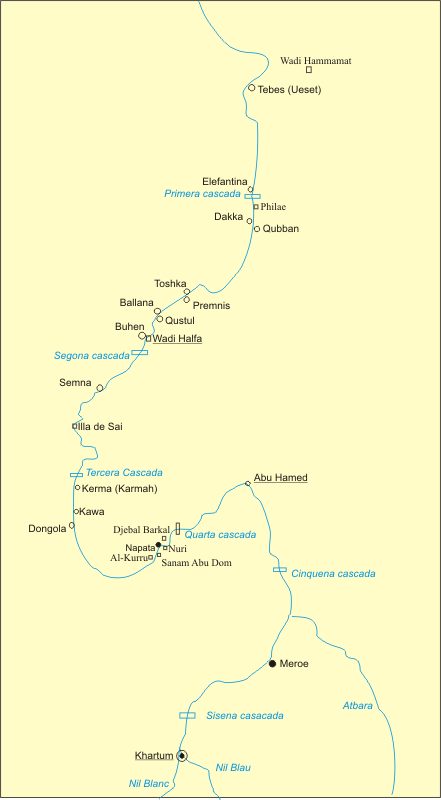
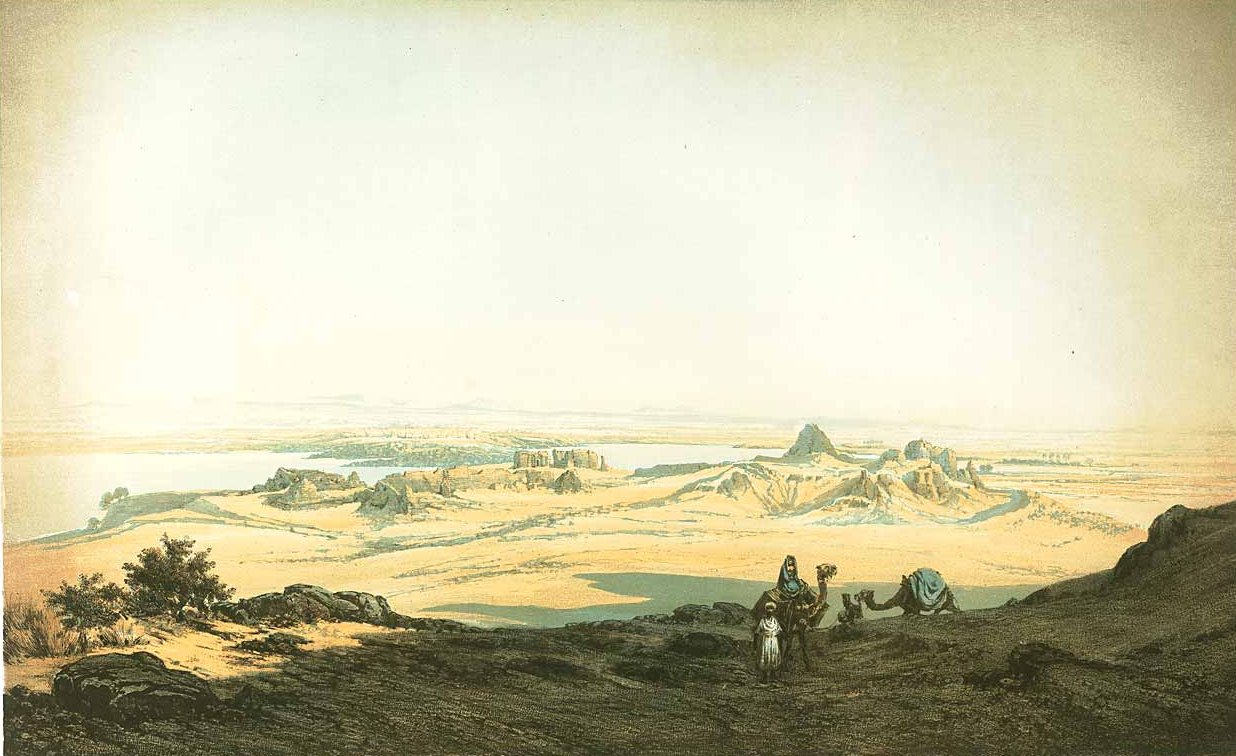

._Temple_dedicated_to_Pa_-_Horakhti.jpg)

